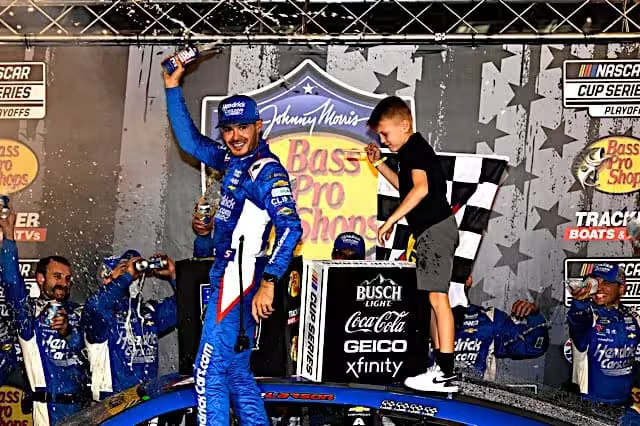A driver just led more than 450 laps in a single NASCAR Cup Series race at Bristol Motor Speedway? Have we been teleported back to the 1970s?
It’s easy to think that’s the case, Saturday night’s (Sept. 21) night race featured an ass kicking of epic proportions that we haven’t seen in almost 50 years.
Kyle Larson led 462 of the 500 laps, which marks the most laps a driver has led in a single race at Bristol since 1977 and the fourth-highest total led at Bristol in Cup Series history.
| Race | Driver | Laps Led | Finish |
| 1973 Bristol I | Cale Yarborough | 500 | 1st |
| 1977 Bristol I | Cale Yarborough | 495 | 1st |
| 1964 Bristol I | Fred Lorenzen | 494 | 1st |
| 2024 Bristol II | Kyle Larson | 462 | 1st |
| 1972 Bristol I | Bobby Allison | 458 | 1st |
| 1972 Bristol II | Bobby Allison | 445 | 1st |
Simply put, the No. 5 car was in its own zip code the entire night.
Larson first took the lead from Hendrick Motorsports teammate Alex Bowman on lap 33 and never looked back, leading all but six laps under caution during pit stops.
Nursing an approximately two-to-three-second lead most of the night, Larson turned on the jets in the final 50 laps, lapping all but nine cars and winning by 7.088 seconds — the largest margin of victory in the Next Gen car and the largest at Bristol since Dale Earnhardt won there in 1994.
Larson’s dominance last weekend was a bizarre but extremely impressive outlier in the Next Gen era, a time where it’s been more difficult than ever for one driver to completely take over an entire race.
Of the 100 Next Gen races run prior to Bristol, only one of them saw a single driver lead more than 75% of the race. That occurred at New Hampshire Motor Speedway last July, where Martin Truex Jr. led 254 of the 301 laps en route to his most recent win in Cup competition.
Meanwhile, 2021 — the final season of the Gen 6 car — saw five races where one driver led more than 75% of the race; Larson was the driver in four of them, and he won three.
Whether it’s an increase in cautions, an increase in late cautions, an increased difficulty in passing or the equalization of the Cup field in terms of lap time, team resources or driver talent, the beatdowns seen just five years ago are becoming more and more…
Click Here to Read the Full Original Article at …

